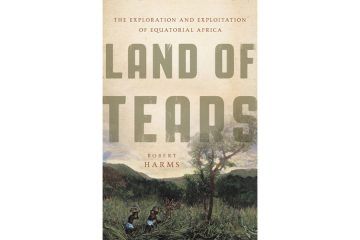Terry Hartle in The Christian Science Monitor:
 The long era of European imperialism started in the 15th century but it was roughly 400 years before the land grab turned to Africa. As late as 1870, outsiders controlled only about 10 percent of the continent. But then a confluence of forces opened the door: The need for raw materials, the demand for new markets for finished goods, and medical advances that made it possible for Europeans to survive in the tropics. By the 1880s, the “Scramble for Africa” had begun. At the heart of this rapacious quest was the Congo River in equatorial Africa and its enormous, almost impenetrable, rain forest. Today, this part of Africa includes the Democratic Republic of the Congo, the Republic of the Congo, Gabon, Cameroon, Equatorial Guinea and the Central African Republic. In “Land of Tears: The Exploration and Exploitation of Equatorial Africa,” Yale University Professor Robert Harms deftly and authoritatively recounts the region’s compelling, fascinating, appalling, and tragic history.
The long era of European imperialism started in the 15th century but it was roughly 400 years before the land grab turned to Africa. As late as 1870, outsiders controlled only about 10 percent of the continent. But then a confluence of forces opened the door: The need for raw materials, the demand for new markets for finished goods, and medical advances that made it possible for Europeans to survive in the tropics. By the 1880s, the “Scramble for Africa” had begun. At the heart of this rapacious quest was the Congo River in equatorial Africa and its enormous, almost impenetrable, rain forest. Today, this part of Africa includes the Democratic Republic of the Congo, the Republic of the Congo, Gabon, Cameroon, Equatorial Guinea and the Central African Republic. In “Land of Tears: The Exploration and Exploitation of Equatorial Africa,” Yale University Professor Robert Harms deftly and authoritatively recounts the region’s compelling, fascinating, appalling, and tragic history.
He organizes the story around three colorful men working for three different rulers. The first was Hamid bin Muhammad (known as Tippu Tip after the sound made by his guns) who swore allegiance to the sultan of Zanzibar, created the Manyema Empire (also described in the book as the Arab Zone) and later transferred his allegiance to the Belgians. Then there was Henry Morton Stanley, a professional adventurer and journalist who went to Africa on behalf of the New York Herald to search for the British explorer David Livingstone. He quickly found Livingstone and then followed the Congo River downstream until he reached the Atlantic, a journey that took roughly eight months and included more than 30 violent encounters with the inhabitants.
More here.
